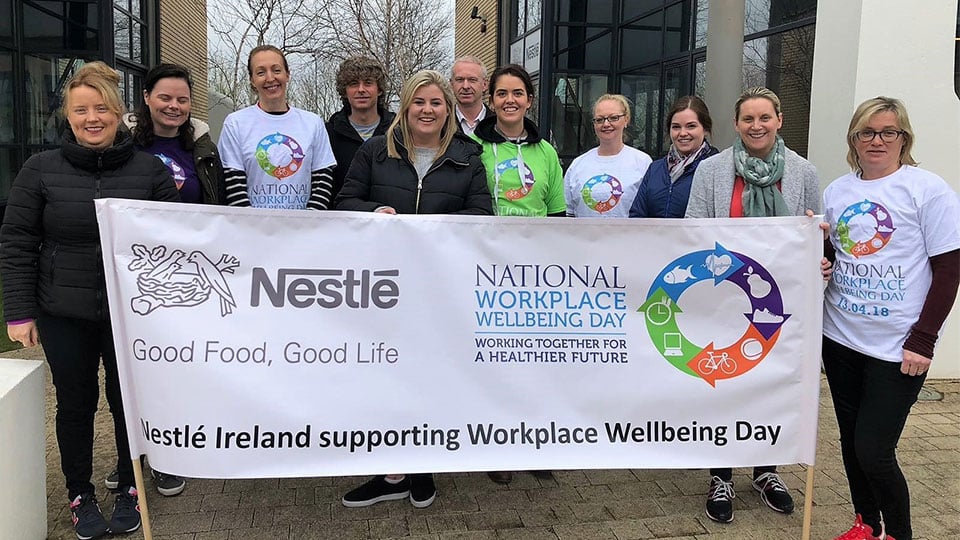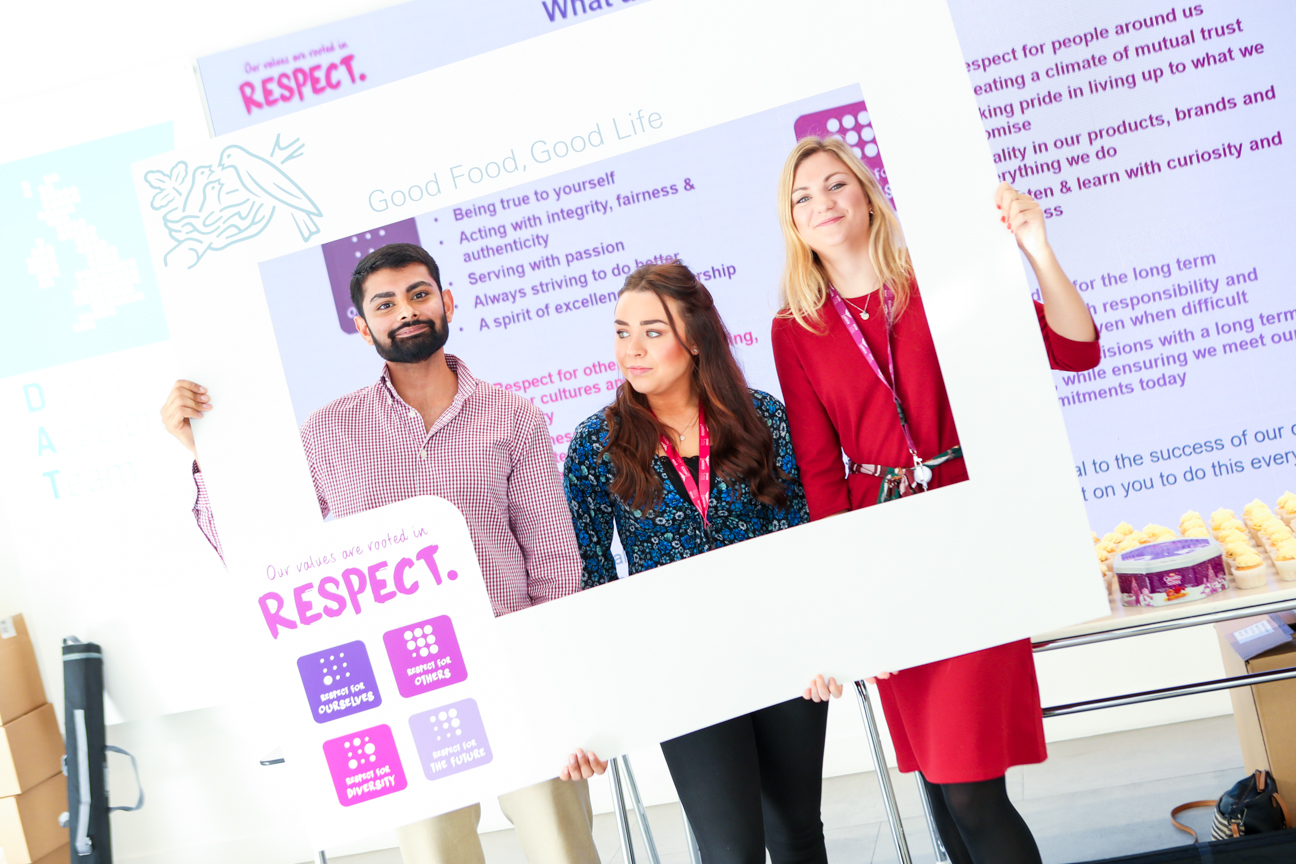Gender pay at Nestlé

What is gender pay gap reporting?
Every year organisations with 250 or more employees must publish data on their gender pay gap. The gender pay gap is a comparison of the average earnings for men and women regardless of the work they do.
Why does it matter?
Gender pay reporting can highlight where there are differences in representation in organisations. For instance, if an organisation has more men than women in well-paid senior roles and more women than men in less well-paid junior roles, then the average pay for men will be higher than for women and there will be a gender pay gap in favour of men.
Our organisation is complex and so is our data. However, our approach is simple. We embrace difference and champion inclusion which is why gender representation across our business is an important area of focus and improving gender balance is an important part of our ongoing commitment to give everyone the chance to be the best they can be.
Gender balance is important, and it is even more important to be transparent as a company and to report our data every year. We want our people to feel comfortable in the workplace and valued in all they do. Having an inclusive and diverse work environment allows us all to be more successful. There is still work to be done in the area of gender pay but we are determined to make changes.
Our Organisation
We have a variety of sites across the UK, including factories (manufacturing and supply operations), offices, Nespresso boutiques as well as a product technology centre with research and development at its core. In Ireland we have a head office and Nespresso boutiques.
Across our business we see some high-level patterns in representation. In the UK and in Ireland we have a slightly higher proportion of women than men in our offices, just under 60%. We see the same picture in our Nespresso boutiques. Across our factory sites we have a high proportion of men, over 80%. And whilst harder to provide a general figure, we also don’t feel we have the right level of representation of women in our most senior roles.
2021 data
When we refer to Nestlé in the UK, this includes our seven main Nestlé legal entities in the UK: Nestlé UK Ltd (our Nescafé, Nestlé Confectionery, Nestlé Food & Dairy, Nestlé Nutrition, Nestlé Health Science and Nestlé Professional businesses as well as factories and corporate functions such as Group Supply Chain and HR), our 2 Nestle Purina legal entities which cover Nestlé Purina manufacturing and commercial operations, Nespresso, Cereal Partners, Nestle Waters and Nestec York Ltd, which houses our R&D centre. All these businesses share a common approach to pay and bonuses. The 2021 report covers approximately 7,453 people across a range of offices, factories, coffee boutiques and our product technology centre in the UK and 142 people in the head office and coffee boutiques in Ireland.
This 2021 report includes data for our head office and Nespresso boutiques in Ireland, which we started voluntarily started publishing in our 2020 report.
Data
We have to report on mean and median data. Mean data is calculated by adding up all the numbers in a sample and dividing by the number in that sample.
Median data is calculated by ranging the numbers in order from the lowest paid to the highest paid, and the middle number is the median.
In our report the calculations of mean and median gender pay gap and bonus pay gap are calculated by taking the figure for women away from the figure for men and dividing by the figure for men.
To calculate pay quartiles or quarters we put the pay of all individuals in descending order and then split them into four equally sized groups. We then report on the percentage of men and women in each group.
Declaration of accuracy: I confirm that this statement is true to the best of my knowledge and belief."
About our data
As we’ve shared, our data is complex and while the data for each individual legal entity may look different, the challenges are the same. We haven’t achieved gender balance. We still have more men than women on our factory sites, and while there’s a stronger female representation in office roles, we have more men in our most senior roles. We’re also conscious that, like many companies, we are not managing to drive change as quickly as we we’d like. We know increasing representation of women in some parts of our business, for instance our factory sites, will take time, but we also know there are things we can do to accelerate change. We’ll continue to review and adjust all our plans and continue to look to accelerate change.
Having a team which is diverse is incredibly important to me. How do we succeed without different styles, perspectives and experiences? We are determined to have more representation of women in senior roles. This is an area where we are working hard to make strides forward.
Our Approach
- Our ambition remains to have balanced representation across all parts of our business, and at all levels. Currently, representation varies quite widely across our teams and has remained consistent with 33% of our workforce are women This is significantly lower in our manufacturing and supply teams which is typical of the industry. We have increased representation at our most senior levels to 32% however, we are clear there is a lot more work to do and have committed to improving representation across all of our teams through setting and regularly reviewing local targets.
- We are delighted that Nestlé globally has been recognised in the Bloomberg gender equality index for the fourth year running, with both an improved and above average score of 78%.
- We have continued our broader work to be able to contribute to gender equality:
- We have trained 100 marketers in Responsible Marketing, with a focus on Inclusive & Accessible Marketing
- Through our partnership with WomenOwned we have directly supported female business owners
- In partnership with Wildhearts, we undertook 58,763 student engagements during 2021 helping to show the possibilities of careers in our industry and within Nestlé
- We actively support our female farmers through the Nestlé First Milk Women in Agriculture Group. This connects our farmers in a supportive network and in 2021 they took part in our Regenerative Agriculture workshops.
- We continue to work with trusted partners like the Diversity & Inclusion in Grocery network to collectively influence an industry of over five million colleagues.
- We have continued to educate our colleagues on our core value of respect and fostering an inclusive culture. Across our manufacturing and supply teams we have trained colleagues on respect at work and 80% of all colleagues on the prevention of sexual harassment.
- It’s important to us to listen to our colleagues to understand their experience and take direct action as a result. During 2021 our board held a series of women in business listening groups and we piloted inclusion committees at two of our factories. In our last colleague survey (2020) 80% of women who responded said that the organisation is open to gender differences and 77% of all respondents that the organisation helps people to balance their work and personal lives. We have updated our action plans as a result of the feedback we received. We have reignited our gender equity network and in 2022 they will act as the voice of our colleagues, support further education opportunities and contribute to the evolution of our action plans.
- We know policies can provide much needed guidance and influence behaviour. We reviewed existing policies and introduced new guidance including supporting colleagues going through the menopause, experiencing domestic violence, and pregnancy loss. After introducing our improved parental leave support in 2020, the proportion of colleagues taking some form of parental leave who are men has increased from 30% to 63%.
- Flexible work options enable more women to have a greater range of career choices. We have moved to a hybrid working culture for our office teams and have continued to find opportunities to support some of our colleagues to work more flexibly in our manufacturing and supply teams.
- It’s vital we continue to attract talented women to work with us. We built on our strong foundation of gender balanced hiring which meant we increased the number of women we recruited into our senior roles last year (to 47% of hires). In our Academy team, we worked with external partners to helps us connect with more women and as a result 52% of our applicants to graduate, intern and placement opportunities were female and 63% of the offers we made were to women.
- We took direct action to focus on supporting women to develop their career through the organisation. Currently 47% of our managers are women across different levels within our business. To make sure we have a strong pipeline of talented women throughout the organisation, we worked with our Board, connected different HR teams, focussed on priority teams and reviewed our succession plans. This resulted in us having better balance on our succession plans. 52% successors to all roles, and 53% to our most senior roles, are female and 57% of people promoted in 2021 were women.
- We continued to offer direct development support through our mentorship and sponsorship programmes within the UK & Ireland, with our European teams and through external partners like the 30% Club and D&I in Grocery. Our global team also introduced a “women in business” leadership programme.
We all experience our workplace differently and with your support I want us to have a great business culture in which you and I feel that we belong. I am co-sponsoring gender equity here in the UK and we are making progress in identifying opportunities, in learning faster and in testing new ideas."
I have now been in my role for a year and am still ambitious to make further changes towards gender equity in manufacturing. We have made some great progress in piloting inclusion committees and trialling shift flexibility, but much more can and will still be done in the coming years.”

















